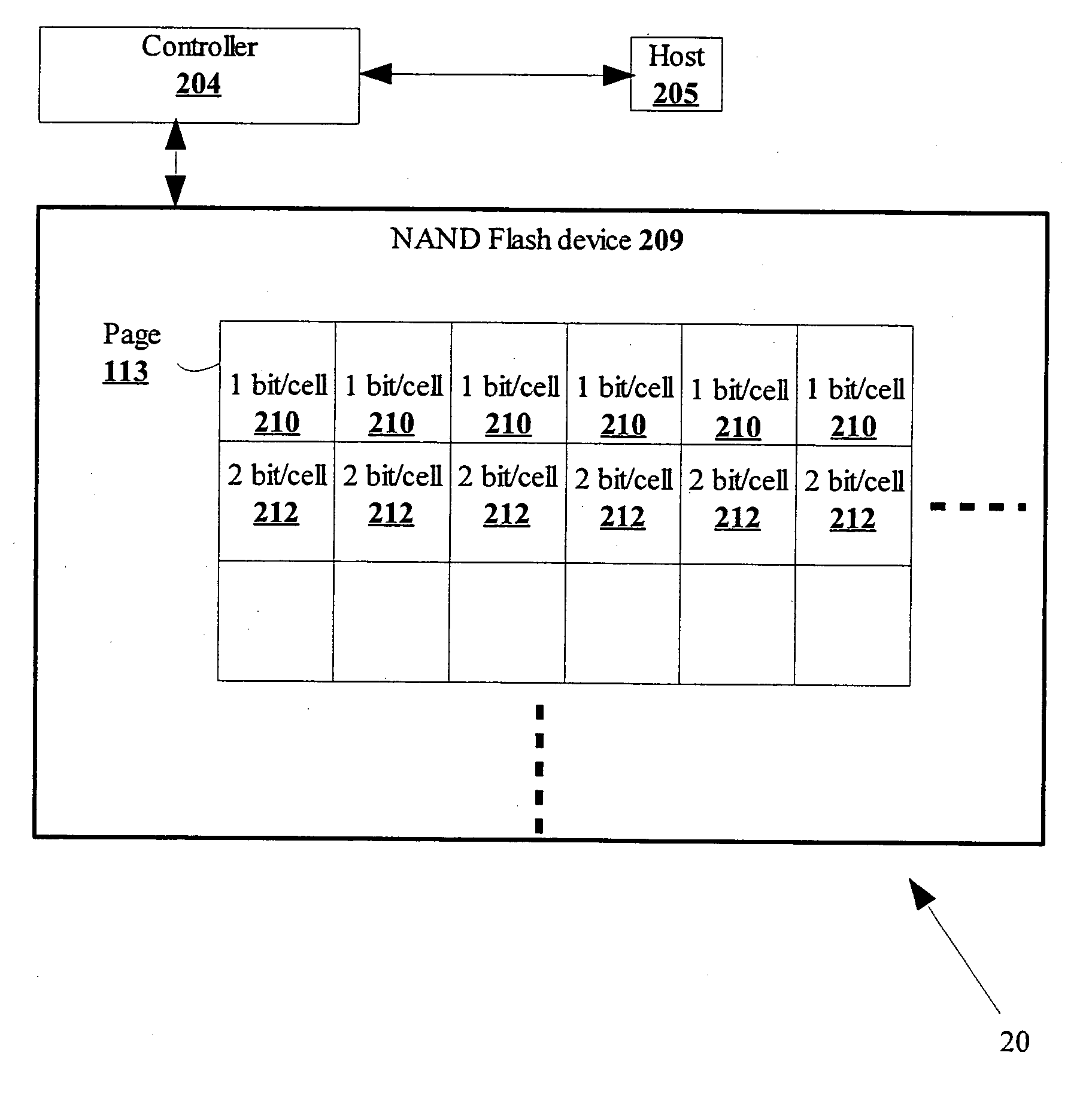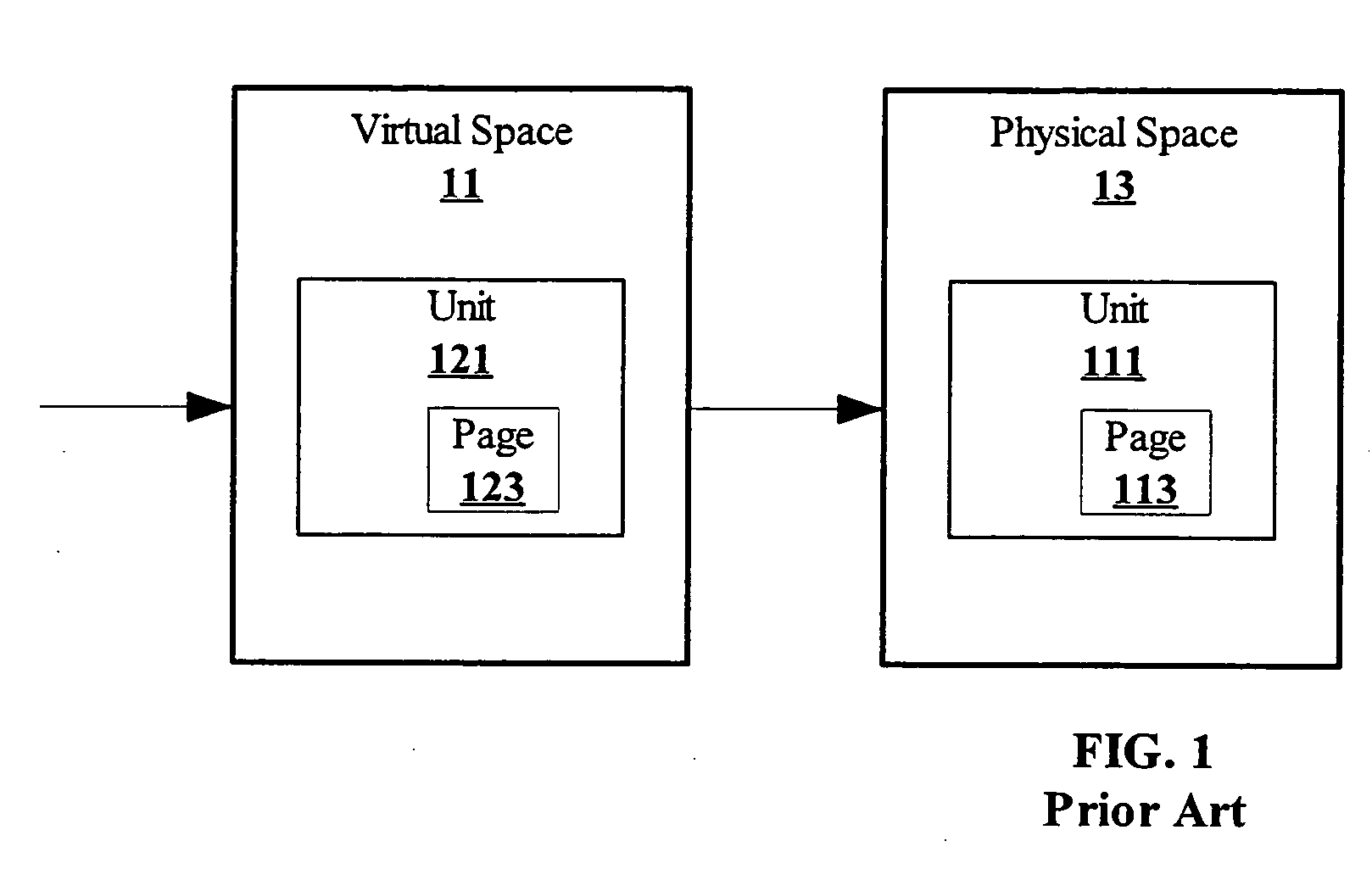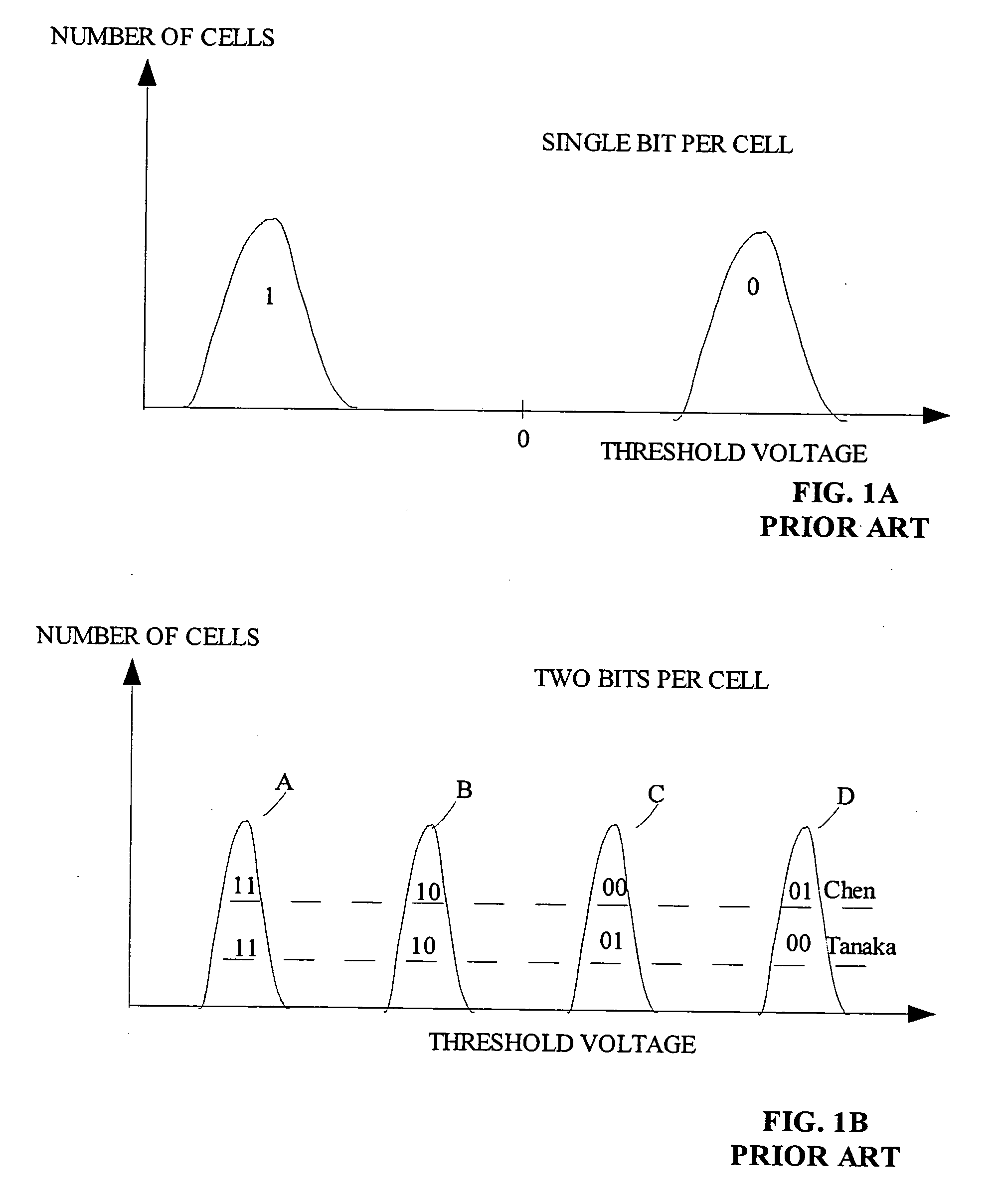Method of managing a multi-bit cell flash memory with improved reliability and performance
a multi-bit cell flash memory and reliability technology, applied in the field of flash memory, can solve the problems of memory block having to be erased, misnomer, and drawbacks of using mbc flash
- Summary
- Abstract
- Description
- Claims
- Application Information
AI Technical Summary
Benefits of technology
Problems solved by technology
Method used
Image
Examples
embodiment 1
[0048] The first embodiment of the present invention is to write the control information and the user data using MBC mode, but still get improved reliability (but not improved read performance) similar to SBC mode. For this to be achieved we restrict the use of the memory cells used for storing the control information to storing just a single bit worth of information each, and not utilize the extra bits that can be stored in these cells when using MBC mode.
[0049] As already explained above, the reason for lower reliability when using MBC mode compared to SBC mode, is the smaller gap between the states of the cell. Thus it is more probable for a cell to erroneously change its state and thus represent incorrect value for one or more of the stored bits. But suppose we use the same cell in a restricted way—only the states “11” and “01” are used, using the Chen coding convention. As can be seen in FIG. 1B, this is the pair of states with largest separation on the threshold voltage axis....
embodiment 2
A Further Improvement: Embodiment 2
[0074] The first embodiment presented above provides for storing control information with high reliability, but does not address the need for storing control information so as to provide better read performance. A second embodiment of the present invention addresses this need too and supports both the reliability and performance goals. The second embodiment, as opposed to the first embodiment requires a special read command provided by the flash device.
[0075] This second embodiment uses the same principles as the first embodiment, also relying on storing the control information with each bit allocated a separate cell, and picking the two furthest separated states of a MBC cell for representing the single bit stored in the cell. When it comes to writing, the second embodiment of the present invention is completely identical to the first embodiment. The only difference is in how reading is done. While the first embodiment employs standard MBC-mode r...
embodiment 3
An Additional Improvement: Embodiment 3
[0079] The first and second embodiments presented above provide for the reliable storage of control information by storing each control information bit in a separate cell, and choosing the right-most state of the MBC cell to represent a “0”. Choosing the “right-most” state provides for the widest separation between the two valid states and therefore has the lowest probability of the cell drifting with time towards the “1” state and generating an error.
[0080] While using the “right-most” state is the best counter-measure for defending against errors caused by charge leakage from the floating gate of the cells, there is another potential source of errors known as “over programming” in NAND flash devices. For understanding the architecture of the cells array in NAND devices and the reasons for the existence of the over programming effect, one is referred to Chen et al. U.S. Pat. No. 6,522,580 entitled “Operating techniques for reducing effects of...
PUM
 Login to View More
Login to View More Abstract
Description
Claims
Application Information
 Login to View More
Login to View More - R&D
- Intellectual Property
- Life Sciences
- Materials
- Tech Scout
- Unparalleled Data Quality
- Higher Quality Content
- 60% Fewer Hallucinations
Browse by: Latest US Patents, China's latest patents, Technical Efficacy Thesaurus, Application Domain, Technology Topic, Popular Technical Reports.
© 2025 PatSnap. All rights reserved.Legal|Privacy policy|Modern Slavery Act Transparency Statement|Sitemap|About US| Contact US: help@patsnap.com



